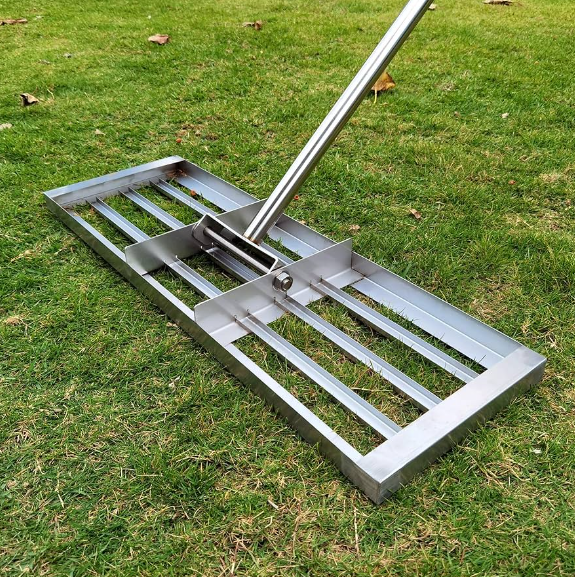Leveling a lawn is an important step to ensure a smooth and even surface, promoting healthy grass growth. Here are the steps you can take to level your lawn:
- Assess the Situation:
- Identify low spots and high spots in your lawn. Low spots may require additional soil, while high spots may need to be reduced.
- Gather Materials:
- You’ll need topsoil or a soil mix, a shovel, a lawn roller, and a rake.
- Fill Low Spots:
- Add topsoil or a soil mix to low spots until they are level with the surrounding area. Avoid using regular sand, as it can compact and lead to drainage issues.
- Remove High Spots:
- For high spots, cut away the excess soil and distribute it to low spots.
- Rake the Surface:
- Use a rake to spread the soil evenly across the lawn. This helps to create a smooth and level surface.
- Water the Area:
- Water the lawn lightly to help the soil settle. This is particularly important if you’ve added new soil.
- Use a Lawn Roller:
- Roll the lawn with a lawn roller to further compact the soil and create a smooth surface. Fill the roller with water to increase its weight if necessary.
- Repeat if Necessary:
- Depending on the severity of the unevenness, you may need to repeat the process in certain areas.
- Overseed (Optional):
- If the leveling process results in bare spots, consider overseeding those areas to promote new grass growth.
- Maintain Proper Lawn Care:
- Regular lawn maintenance, including mowing and watering, will help keep your lawn healthy and even.
- Consider Professional Help:
- If your lawn has severe grading issues or if you’re unsure about the best approach, consulting with a professional landscaper or lawn care service may be beneficial.
Remember that the success of leveling your lawn depends on the extent of the unevenness and the care you take during the process. It’s often best to tackle this project during the growing season when the grass can recover more quickly.

